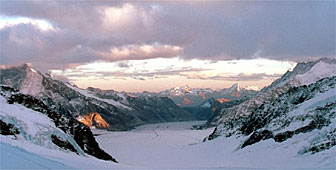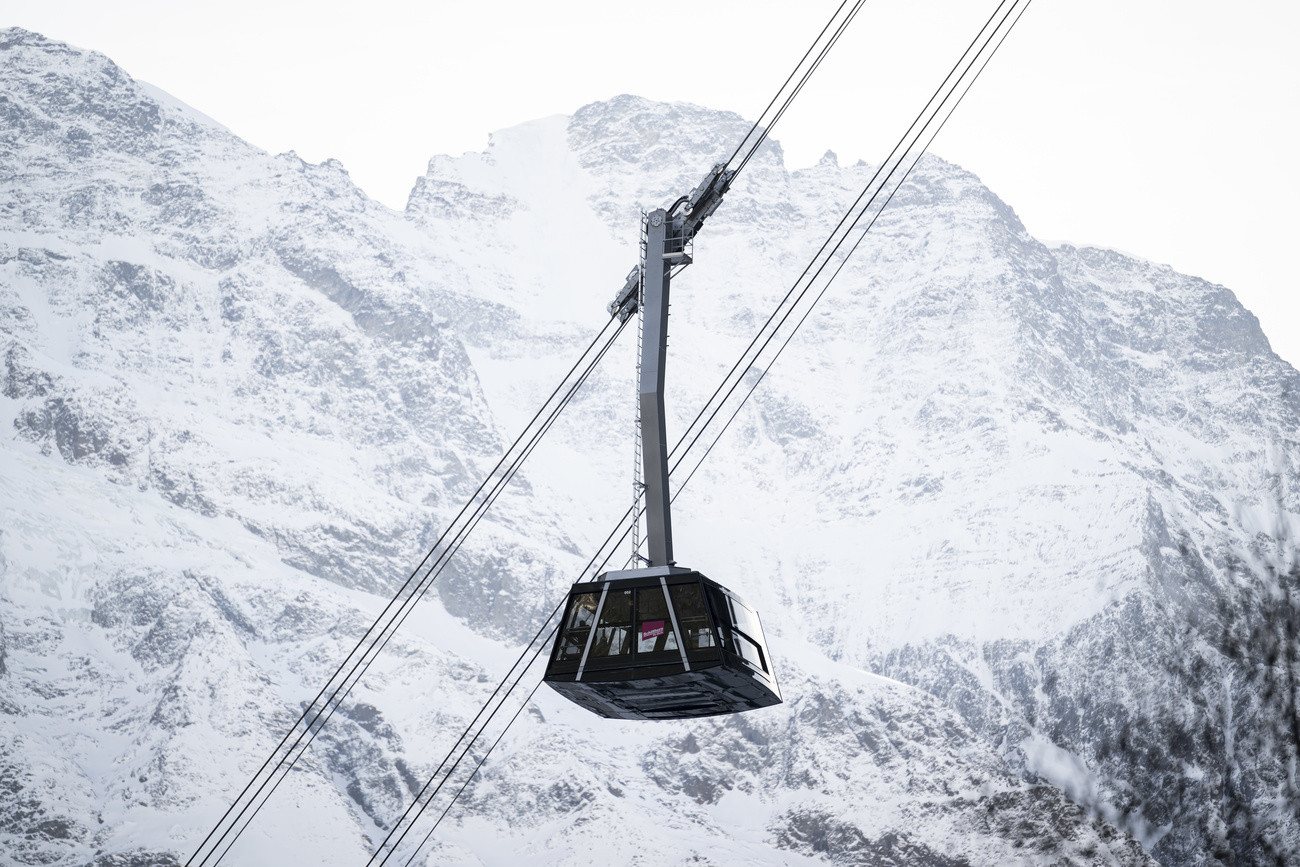Glacier region becomes World Heritage site

A Swiss alpine region has been awarded World Heritage status - the first natural area in the Alps to achieve this recognition.
Members of the World Heritage Committee of the United Nations Educational, Scientific and Cultural Organisation (Unesco) decided last week to recognise the Aletsch-Jungfrau-Bietschorn region as a World Heritage site.
Meinhard Küttel of the Swiss environment agency, who was at the World Heritage meeting in the Finnish capital Helsinki, said he was very pleased about the decision, even though it did not come as a surprise.
“On one side it is an honour, on the other side it is a challenge as we have to protect the region for future generations in the spirit of the convention,” he told swissinfo.
Outstanding universal value
World Heritage status means the region is considered to be of outstanding universal value.
Preserving it for future generations means the region, which covers more than 500 square kilometres, cannot be developed any further.
“There is no possibility to build any more chairlifts or cable cars, however, the existing Jungfrau railway will stay,” said Küttel.
The Swiss government is now required to draw up a management plan for the region over the next three years, which will include details on how to manage the increasing number of tourists.
“In other regions the number of tourists has risen by up to 30 per cent after they had been declared World Heritage site,” said Laudo Albrecht, who led the bid.
Albrecht wants all people coming to the region to be accommodated in visitor centres, which should mainly be set up in buildings which already exist.
Longest glacier
The high-alpine district, with its landscape of snow, ice and rock, is known for its biodiversity. The Aletsch Glacier contains nearly 30 billion tonnes of ice and, at 23 kilometres, is the longest glacier in the Alps.
However, the glacier is currently receding at a rate of up to 30 metres per year and has lost a significant amount of its mass in the past 150 years.
“Unfortunately World Heritage status cannot include climatic changes… and that is the problem,” said Küttel.
Switzerland has put forward another bid to include the region of the Monte San Giorgio in Ticino in the World Heritage List. A decision is expected at the end of 2003.
swissinfo

In compliance with the JTI standards
More: SWI swissinfo.ch certified by the Journalism Trust Initiative








You can find an overview of ongoing debates with our journalists here . Please join us!
If you want to start a conversation about a topic raised in this article or want to report factual errors, email us at english@swissinfo.ch.